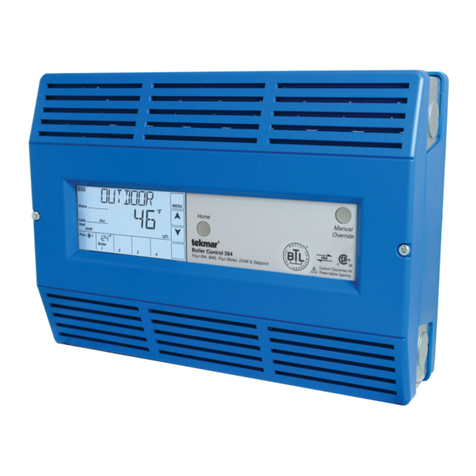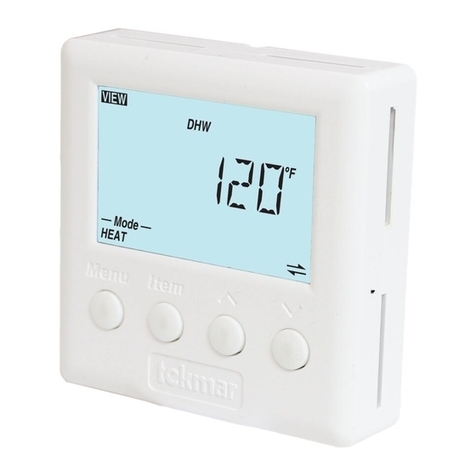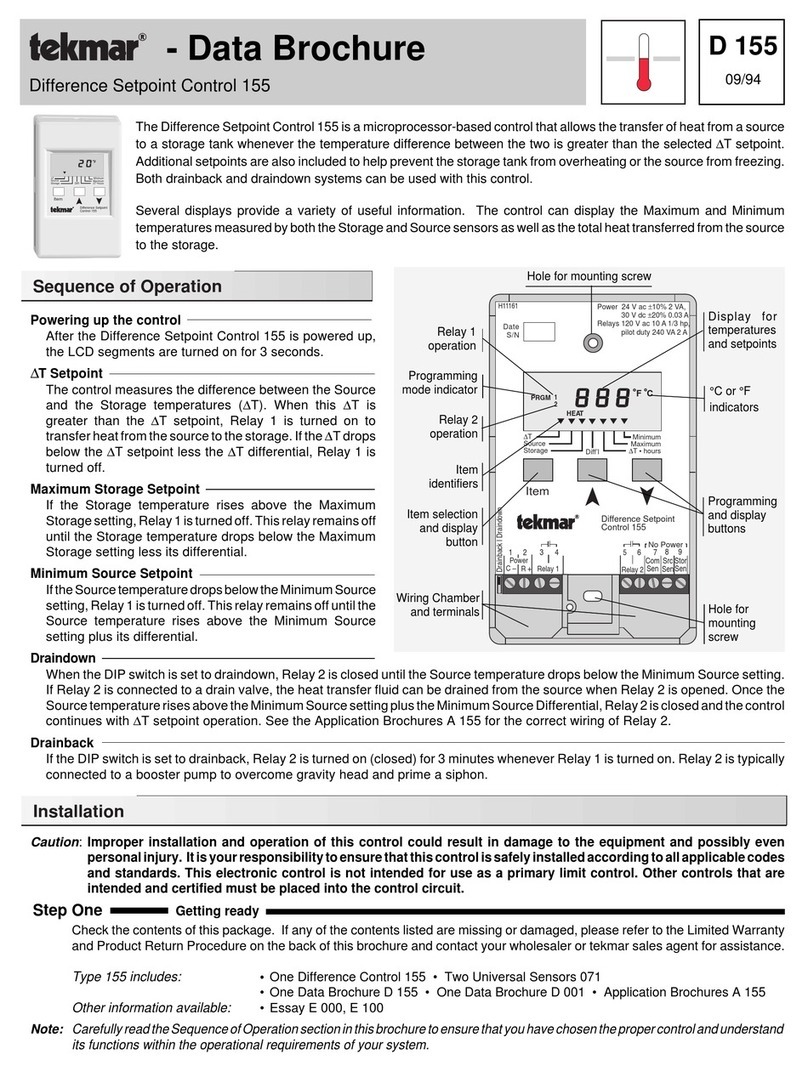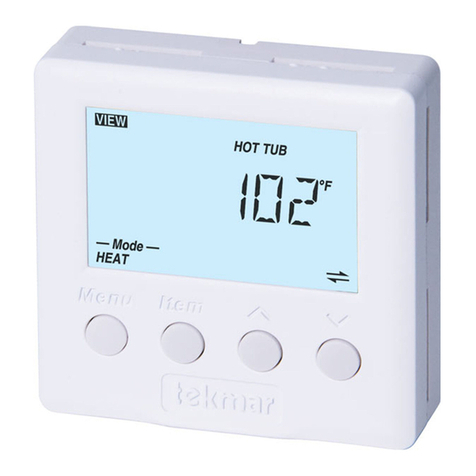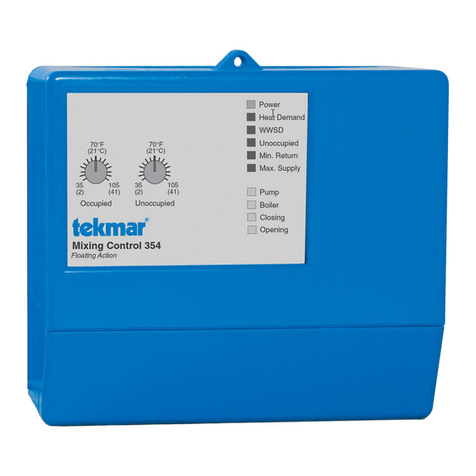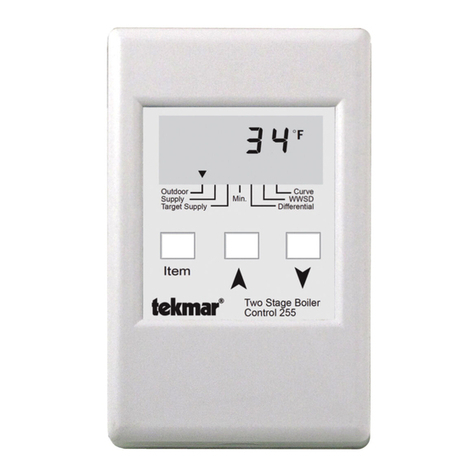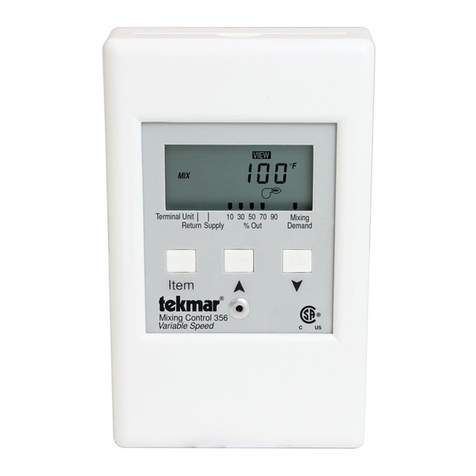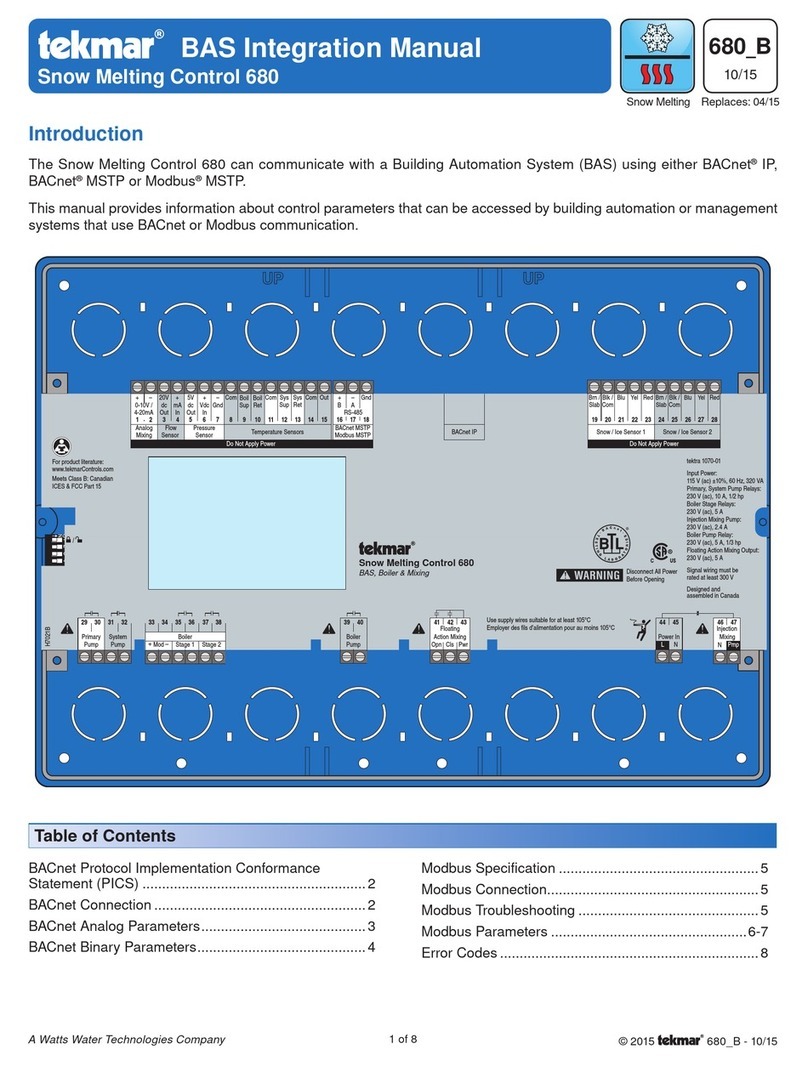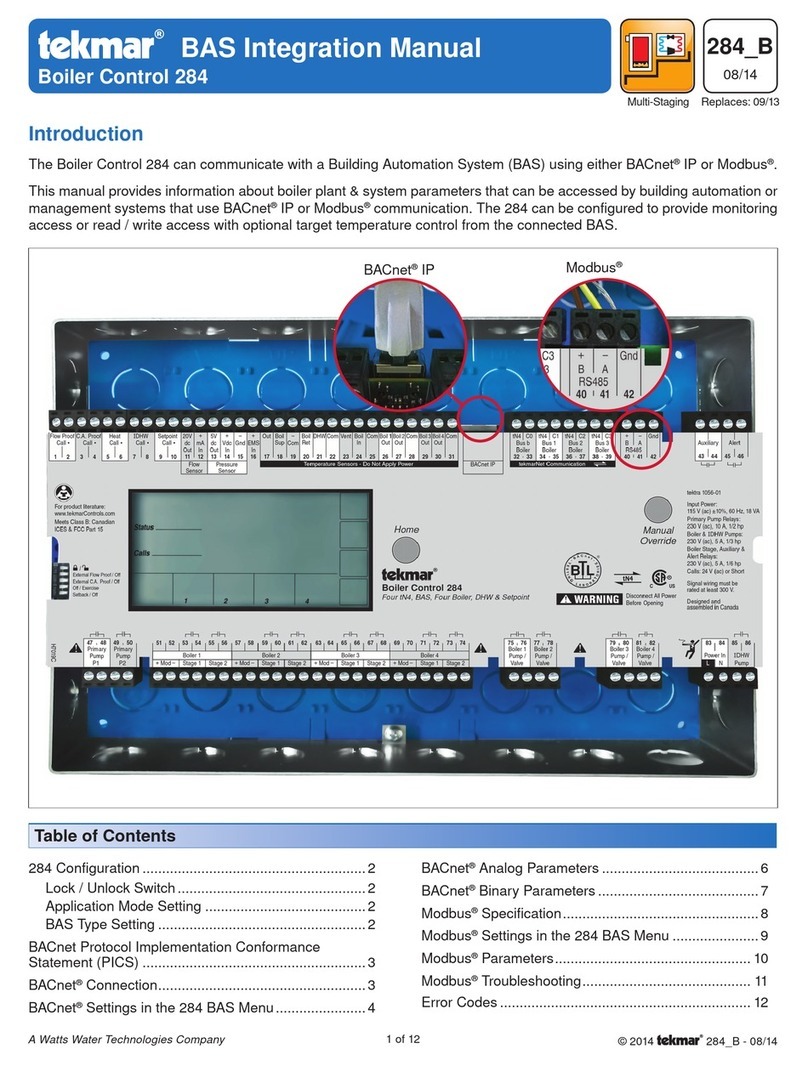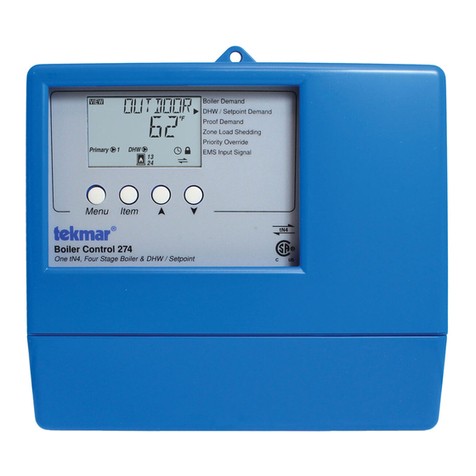
Step Six
Before you leave
• Install the wiring cover over the wiring chamber and secure it to the base with the screw provided. Place the front cover over the
control and snap it into place.
• Placethisbrochure,andallotherbrochuresrelatingtotheinstallation,intheprotectiveplasticbagsuppliedwiththecontrol. Place
the bag in a conspicuous location near the control for future reference.
• It is important to explain the operation of the control and melting system to all users who may be operating it.
Technical Data
Theinstallermustensurethatthiscontrolanditswiringareisolatedand/orshieldedfromstrongsourcesofelectromagneticnoise.Conversely,
thiscontroldoesnotexceedtheClassBlimitsforradionoiseemissionsfromdigitalapparatusassetoutintheRadioInterferenceRegulations
of the Canadian Department of Communications. If this equipment does cause interference, the user is encouraged to try and correct the
interference by reorienting the receiving antenna and/or relocating the receiver with respect to this equipment.
Le présent numérique n’émete pas de bruits radioeléctriques dépassant les limites applicables aux appareils numériques de Classe B
prescrites dans le réglement sur le brouillace radioeléctrique édicté par le Ministére des Communications du Canada.
Limited Warranty and Product Return Procedure
Limited Warranty: tekmar warrants to the original purchaser each tekmar
product against defects in workmanship and materials when the product is
installed and used in compliance with tekmar's instructions. This limited
warranty covers the cost of parts and labour provided by tekmar to correct
defects in materials and/or workmanship. Returned products that are fully
operational are not considered a warranty case. tekmar also does not cover
parts or labour to remove, transport or reinstall a defective product. tekmar will
not be liable for any damage other than repair or replacement of the defective
part or parts and such repair or replacement shall be deemed to be the sole
remedy from tekmar. This warranty shall not apply to any defects caused or
repairsrequired asa result ofunreasonable ornegligentuse, neglect,accident,
improper installation, or unauthorized repair or alterations. In case of defect,
malfunction or failure to conform to warranty, tekmar will, for a warranty period
of24monthsfromthedateofinvoicetotheoriginalpurchaseror12monthsfrom
the date of installation of the product, whichever occurs first, repair, exchange
or give credit for the defective product. Any express or implied warranty which
the purchaser may have, including merchantability and fitness for a particular
purpose, shall not extend beyond 24 months from the date of invoice or 12
months from the date of installation of the product, whichever occurs first.
Replacements: tekmar can send replacement products if requested. All
replacements are invoiced. Any possible credit for the replacement will only be
issued once the replaced product has been returned to tekmar.
Product Return Procedure: Productsthat are believed to have failed must be
returnedtotekmarControlSystemsLtd.4611-23rdStreet,VernonB.C.Canada
V1T 4K7 when agreed to by tekmar. The installer or other qualified service
person must, at the owner's expense, determine which component has failed. The
product must be returned complete with all of its components (sensors, base, etc.).
Products must be returned together with the proof of purchase to the original
purchaser who then returns the product to tekmar after receiving a Return Goods
Authorization (RGA) number from tekmar.
Please include the following information with the product. The full address of the
original purchaser, the RGA number and a description of the problem.
From the U.S.A., in order to avoid customs charges, products must be returned via
USPostwiththepackageclearlymarkedwiththeRGAnumber,producttypeandthe
statement "Canadian Product returned for repair". For shipping purposes the
product can be valued at one half list price.
1) If returned during the warranty period and the product is defective, tekmar will
issue full credit for the returned product less cost of missing parts.
2) Ifreturnedduringthewarrantyperiodandtheproductisfullyoperational,tekmar
will return the product to the original purchaser for a testing cost of $30.00 plus
postage.
3) Ifreturnedduringthewarrantyperiodandtheproductisnotdamagedandisfully
operational, tekmar can take back the product for a return charge of 40% of the
product's net value. This request has to be specified otherwise the product will
be returned with a testing cost of $30.00 plus postage.
4) If returned after the warranty period and the product needs repair, tekmar will
repair and return the product. Repair and postage costs will be invoiced.
tekmar's repair costs are calculated at $30.00 / hour plus the cost of parts. If
the repair costs will be more than $60.00 a repair estimate will be sent to the
original purchaser.
4
All specifications are subject to change without notice.
Printed in Canada on recycled paper.
Product designs, software and literature are Copyright © 1994 by:
tekmar Control Systems Ltd. and tekmar Control Systems, Inc.
In North America: tekmar Control Systems Ltd., Canada
tekmar Control Systems, Inc., U.S.A.
Head office: 4611 - 23rd Street
Vernon, B.C. Canada V1T 4K7
Tel. (604) 545-7749 Fax. (604) 545-0650
Snow Melting Control 650
Literature — D 650, A650, D 001, E 000, E 600
Control — Microprocessor PI control; This is not a safety (limit) control.
Packaged weight — 1.3 lb. (600 g), Enclosure C, PVC plastic
Dimensions — 4-3/4” H x 2-7/8” W x 7/8” D (120 x 74 x 22 mm)
Approvals — Meets DOC regulations for EMI/RFI.
Ambient conditions — Indoor use only, -20 to 120°F (-30 to 50°C), < 90% RH non-
condensing.
Power supply — Class 2, 24 V ac ±10% 50/60 Hz 3 VA
Relays — 120 V ac 10 A1/3 hp, pilot duty 240 VA 2 A
Sensors — NTC thermistor, 10 kΩ@ 25°C ±0.2°C ß=3892
included: Outdoor Sensor 070 and Slab Sensor 072.
Control accuracy — ±0.5°F (±0.25°C) with up to 1000 feet (300m) of 18AWG wire
to sensors.
On Time
— 0:30 to 19:50 hours to ‘Infinite’
Melting
— 34 to 45°F (1 to 7°C)
Idling
— Off, 23 to 34°F (-5 to 1°C)
CWCO
— Off, -22 to 23°F (-30 to -5°C)
Snow Melting
Control 650
Pulse Width Modulation
On
Time
PRGM
FC
Item
Date
S/N
Power Supply:
24V 60Hz 3VA
Relay Capacities:
120V 10A 1/3hp
5
System
Melt at power up
On
Off
6
34
Heat
No Power
789
Com
Sen
Slab
Sen
Out
Sen
24 V Only
21
CR
Power
Outdoor
Slab Sensor
Target Slab
Start Stop
CWCO
Idling
Melting
H11131


